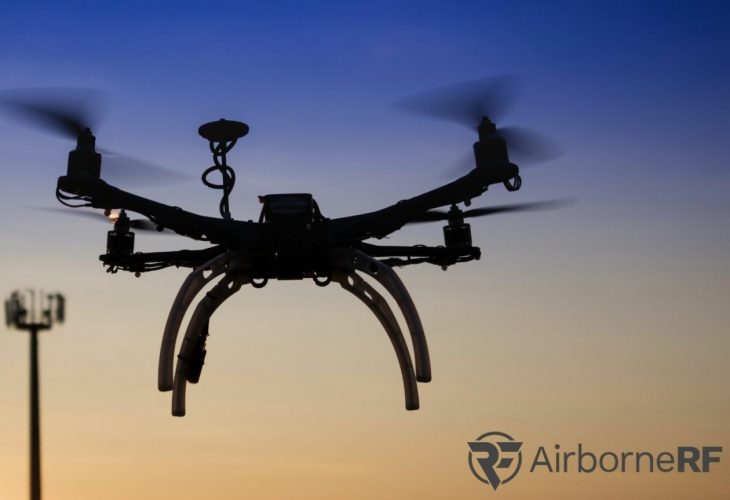As drone operations continue to scale and their benefits continue to transcend, cellular connectivity is fast becoming one of the best solutions in terms of fully operationalising beyond-visual-line-of-sight (BVLOS) operations.
According to Business Insider, there’s no arguing the spike in drone industry growth that has occurred in the last few years – the drone services market size is expected to grow from $4.4 billion in 2018 to $63.6 billion by 2025, and Business Insider Intelligence predicts consumer drone shipments will hit 29 million by 2021. Indeed, we are seeing the expansion of operations and the demand for services increase every day, particularly accelerated by the current COVID-19 crises where fast, reliable, autonomous solutions are needed more than ever.
Some of the main barriers faced today, however, are:
- assured identity;
- safety and security
- continual connectivity and, of course;
- where and how to safely fly BVLOS.
During a demonstration of UAS Remote-ID, the Swiss Federal Office of Civil Aviation (FOCA) were unanimous in their acceptance of the performance of the networked solution above others. The Swiss FOCA are already working on the regulatory framework in preparation to drive this forward and are working with the Swiss U-space Implementation (SUSI) members to develop an onboarding and monitoring process for Remote-ID services. The demonstration highlighted the limitations of using Bluetooth and WIFI.
Cellular connectivity is clearly a solution. Data exchanged between Mobile Network Operators (MNOs) and the Drone airspace operators/ users in a way that ensures each BVLOS flight is safe, secure and reliable.
Another great example was given in the recent study by Université de Lorraine on cellular-connected UAVs, which showed that there is huge potential for the ecosystem to utilise the cellular connectivity already in existence.
Indeed, many MNOs are already well on their way to preparing for the increase in Drone usage throughout their cellular networks. Skywards, A Verizon company, has an Aviation Network Technology team who are dedicated to connecting drones throughout the Verizon network, working on 4G and 5G solutions to ensure universal connectivity, as well as network-based Remote-IDs. Vodafone has been preparing its infrastructure for drone connectivity for some time now, and is running various trials looking at geo-locating, interference mitigation and safety, amongst others. China Unicom has launched an innovative business service project to enable unmanned aerial vehicles (UAVs) to fly at higher altitudes and over longer distances. The Internet & Industrial UAV project employs Unicom’s mobile network to provide industrial drones with ground-to-air communication services for BLOS/ BVLOS (beyond-line-of-sight/ beyond-visual-line-of-sight) operation.
There are many every-day use-cases already in existence where drone service providers are providing solution by utilizing cellular technologies. EuroDragon and Smart Digital in Austriaare continuously demonstrating the cellular connectivity effectiveness in agriculture, public safety and security – an area which continues to be of concern to many. In fact, Swiss Post and Matternet, who have been working together transporting lab samples via drones since 2017 run their operations using SIM card connected cellular drones.
“At the moment lots of drones are not allowed to fly beyond line of sight, so the networks don’t need to be so complex. But in the longer term when there will be more usage of autonomous drones flying long distance. To be able to fly that far drones will need 5G for better navigation and communication with the pilot,” said Kay Sharpington, Principal Analyst, Research, Gartner.
That is where the technology developed by AirborneRF provides the solution. With in-built safety features that omit any risk of exchanging data that may compromise the privacy of either party, AirborneRF connects the cellular network with BVLOS drone operation enabling end-to-end drone solutions with aviation partners. By utilizing AirborneRF solution, you can scale drone operations quickly and efficiently on the cellular network.
For more information please contact us below.
Cellular connectivity is gaining momentum, AirborneRF provides the solution
Remember to follow us on LinkedIn & Twitter to be the first to hear the latest AirborneRF news and updates.




